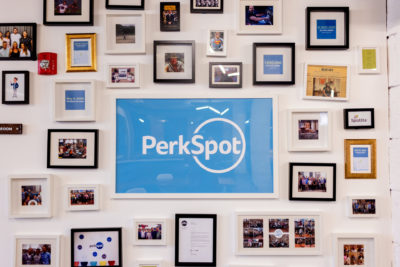Courtney Shipshock
August 7, 2020
Company culture has transformed from a popular HR buzzword to an important element that companies give serious consideration to. As COVID-19 continues to impact how companies manage their employees and their business, culture is more important than ever. Check out a few reasons why keeping up with your company culture is so important right now!

1. Recruitment, Hiring, and Onboarding
During the early stages of the coronavirus, things like recruitment and hiring came to a halt for many companies as they worked to navigate the rough waters of the pandemic. However, it’s become increasingly apparent that we can no longer put important processes like hiring on hold. Instead, we must focus on transforming them, just as many companies have done with other facets of their work.
Company culture has always been an important part of recruitment and hiring. It’s a wonderful way for candidates to better understand the inner workings of the company they’re applying and interviewing at. This is why it should be at the forefront of all HR professionals’ minds while determining a new hiring process.
For example, how do you utilize social media to convey company culture? This is especially important given candidates often can’t meet with you or experience your workplace in person. Consider the interview process, especially for the companies and employees deemed essential. How do you show candidates what steps you’re taking to ensure employee health and safety? Upon hiring, do you have a carefully thought-out and prepared plan to onboard an employee who may have to work remotely for the foreseeable future? All of these are questions that will reflect your company culture. Therefore, you should be considering each one as you develop a new hiring plan amidst the coronavirus.
2. Communication
For many companies during the COVID-19 pandemic, communication has become vital. As a company with essential employees, communicating new health guidelines or changes in hours should be done in a timely manner. As a company whose employees have remained remote, online communication has become one of the only ways to transmit important messages and information.
No matter what your business is, you likely know the importance of communication. But what many don’t realize is how communication and company culture are connected. Remember, company culture isn’t just about weekly happy hours or interesting amenities at your workplace. It’s also about how you value your employees’ health and wellbeing, and how you transparently demonstrate that to them. To keep your company culture strong during the pandemic, reinforce your support of employees by keeping communication constant and educational, and offering a space for them to respond if needed. Work to quickly develop new guidelines based on the information you’re receiving. Then, communicate them to your employees in a way that is digestible and concise. Use different communication channels to send out messages with varying degrees of importance. This way, employees can quickly understand the gravity of a given situation.
For example, PerkSpot leverages a few different communication channels. We rely on Slack to communicate more casual notices, like a fun company-wide initiative or virtual event. We depend on email to send out important messages, like new in-office guidelines or rules for quarantining. Plus, we hold a regular cadence of company-wide meetings, creating a forum in which employees can get updates on other departments and ask questions about future plans or team developments. This effective and transparent system of communicating helps employees better fulfill their roles and responsibilities, thus creating a culture of connected and engaged employees!
3. Productivity and Engagement
Speaking of engagement, there’s no doubt of the connection between company culture and a productive and engaged workforce. A study by Queens School of Business and the Gallup Organization found disengaged workers showed 37% more absenteeism, 49% more accidents, and 60% more errors. Plus, that disengagement translated to 18% lower productivity!
A positive company culture, on the other hand, typically produces more engaged employees. This is because it promotes general employee wellness, support, and respect. If leaders or management put too much of an emphasis on working long hours or being overly productive, without mentioning the value of daily breaks or acknowledging employees’ hard work, a stressful and negative culture can quickly emerge. So, how can you promote a culture of employee wellness and support? Encourage employees to take breaks away from their work, especially if they’re remote. Offer resources that foster both physical and mental wellbeing and motivate leaders in your company to set an example by doing so as well. Recognize your employees going above and beyond to produce great results, which promotes a more engaged workforce and a culture of workplace appreciation.
For example, as an employee discount provider, PerkSpot employees receive all of the benefits that we offer our clients! That means PerkSpotters have access to discounted mental health apps, home workout products, and more. Plus, we add and highlight new discounts that are relevant to the wellbeing of employees regularly so employees are aware of them. These perks are a great way for leadership to demonstrate how they prioritize the health of their employees which, in turn, leads to a more productive and engaged workforce!
For many years, company culture has been a way for companies to highlight their values to current and potential employees. But amidst an unprecedented pandemic, company culture also offers the opportunity to help promote stronger engagement and more informative communication. Plus, it’s the perfect way to attract potential employees when so many other resources aren’t available. As we all work to navigate COVID-19 and its impacts, be sure you continue to prioritize and adapt your company culture!
























